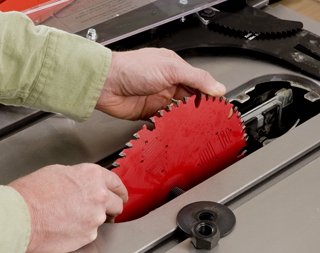
Is there a time when is no longer cost-effective to have carbide blades (80 tooth, 10″ dia.) resharpened? I have a blade that has been resharpened at least 10 times in the last 15 years, and it seems to me that the sharpness does not last as long as before. Thanks. – Jim Dalton
John McInerney: Carbide-tipped blades have a “plate” (steel plate body) thickness measurement and a “kerf” (carbide tooth) measurement. The kerf is always proud of the plate, and this measurable difference is called “side clearance.” A good saw sharpener will service a blade by grinding the individual teeth on the “top,” the “face” and the “sides,” always removing some measurable amount of carbide with each pass of the diamond wheel. After multiple resharpenings, the side clearance gets diminished as it approaches the thickness of the plate. Many people decide to continue to have their blades resharpened. However, all the saw shop can do at this point is “face grind” the tooth, as there must be some side clearance in order for the blade to cut properly. Everything has a lifespan, even saw blades. It might be time for you to invest in a new blade.
(John McInerney is vice president of sales and marketing for Amana Tool Corporation.)
Chris Marshall: If you do decide to replace your blade instead of sharpening it again, be sure to check out A.J. Hamler’s “Cutting Edge Technology” Shop Test that ran in our April 2011 print issue this year (pages 64 to 68). He takes a closer look at many new blade innovations that are on the market, and you might find just the new blade that meets your needs and pocketbook.





